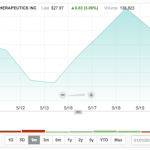
Investors should be alarmed by what the Fed will miss in the most recent slew of data on the state of the U.S. labor market. By the same token, they should be reassured that there’s is another payroll report ahead of the March Federal Open Market Committee meeting.
What messages will the Fed glean? Their in-house economists’ metrics will tell them that consumer spending will pick up in the months to come care of full-time job creation and accelerating wage gains. Indeed, wage growth last year was the briskest since July 2009 and January’s outsized 0.5-percent gain gives credence to those who’ve been warning about growing paychecks.
Expect the Fed to disregard the slide in job creation and conclude that a one-month aberration can be dismissed, as one month never makes a trend. In fact, when you average the gains, the trend in payroll growth is accelerating: the three-month average is 222,000, which outpaces the six-month average of 212,000, which in turn bests the 12-month average of 214,000.
The most encouraging aspect of the report, bar none, was the age cohort responsible for the decline in the unemployment rate to an eight-year low of 4.9 percent. The Lindsey Group’s Peter Boockvar points out that the bulk of the gains in the household report came from those ages 25-54 years old.
“In this ripe-age-for-working category, 607,000 more got jobs while there was little change for those aged 16-24 and over the age of 55, in sharp contrast to the prior month and in this cycle,” Boockvar noted.
So the increase in the labor force participation rate and wages, coupled with the decline in the unemployment rate and no disaster in average gains will probably be where the narrative ends for Fed policymakers. Janet Yellen is sure to applaud the improvement in the jobs market when she testifies to Congress next week. Expect speech after speech to echo this merry sentiment in the weeks to come, putting investors further on edge.














Leave A Comment